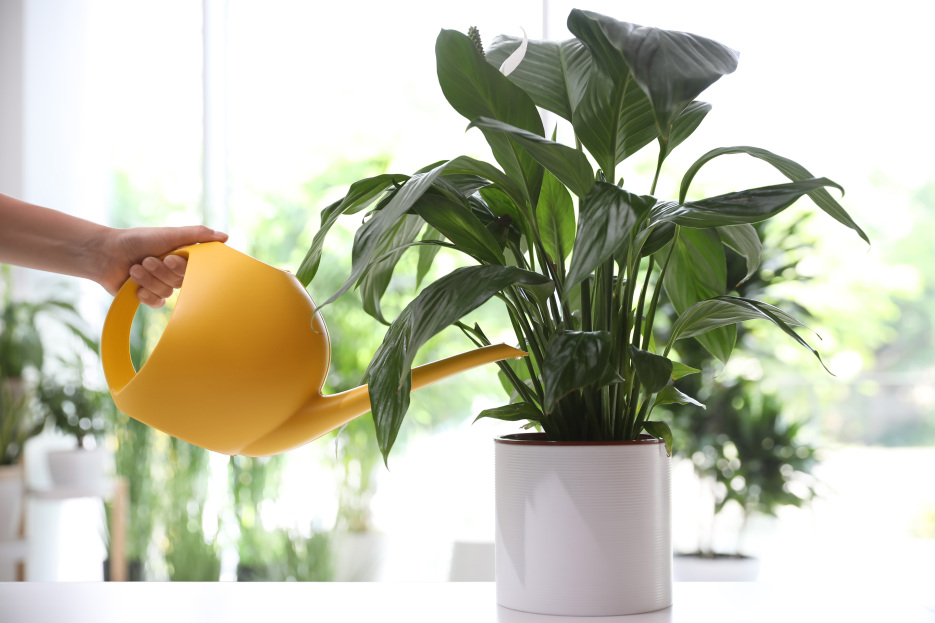
Second only to sunlight, water is the most important thing you can give your plant to help it thrive. However, improper watering is one of the most common causes of plant death. But how much water does your plant need, and when and how should it be watered? Read on to learn more.
There are many ways to water your plant, some ways are meant for specific types of plants. In this guide we go over all the best practices and tips when it comes to watering your plants.
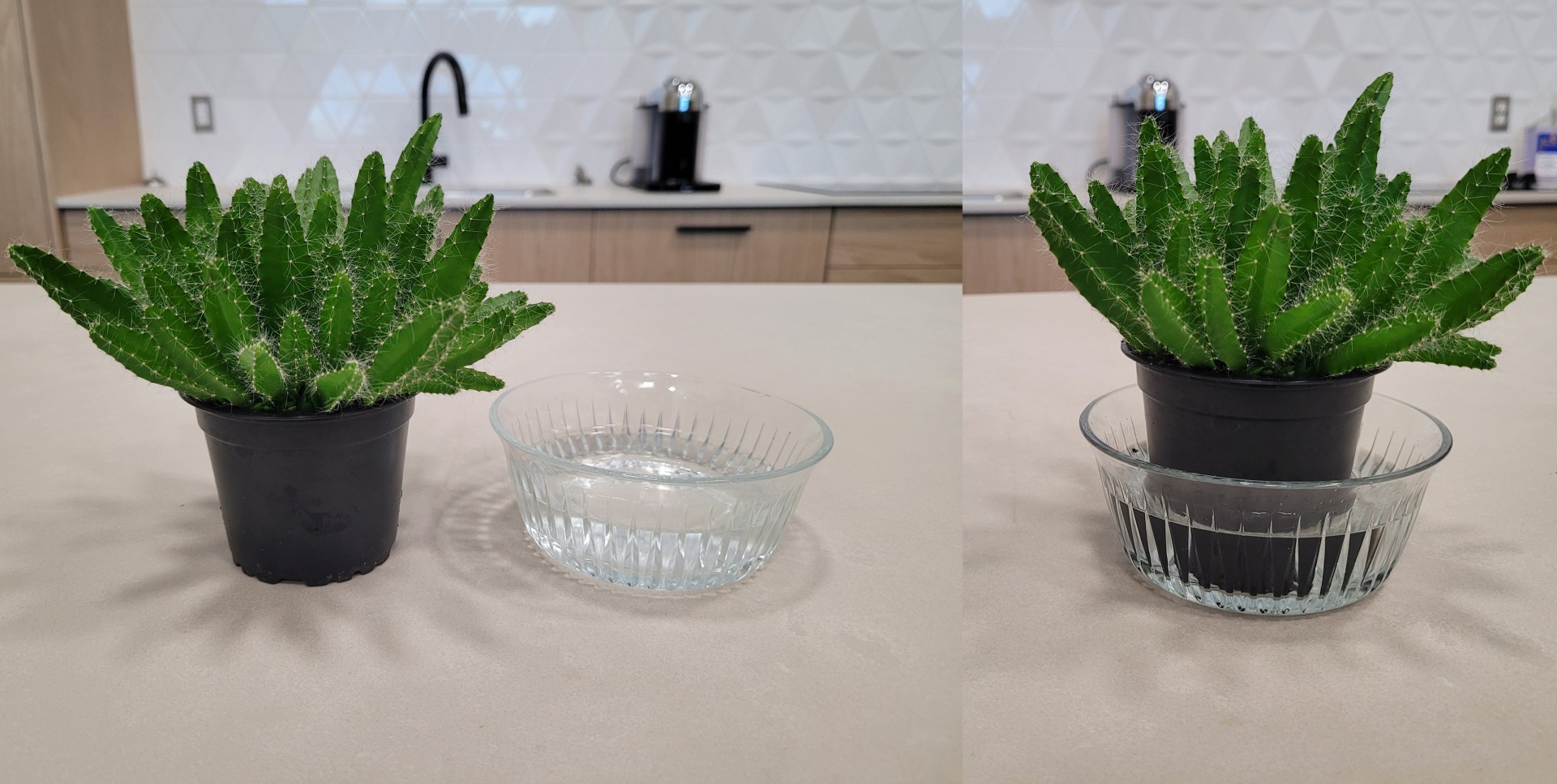
Bottom watering is the best suited for plants such as succulents and cacti, and plants with very dry or well-draining soil. Since these types of plants cover a large portion of the top of the soil, being able to water it can be messy and inconsistent. Bottom watering can help solve this problem. It can also help ensure that the plant is able to absorb as much water as it needs, because water tends to drain very quickly through dry soil.
To bottom water your plant, take your plant out of its decorative overpot (but leave it inside its grow pot with drainage holes). Fill a sink or basin with at least 1” inch of water. Place your plant into this water bath and let it sit for about 10-15 minutes. This allows the roots to soak up the water they need.
After letting your plant sit in this bath of water. Remove the plant and let all excess water drain from its drainage holes. Once the water stops draining from the bottom you can return it back into its overpot.
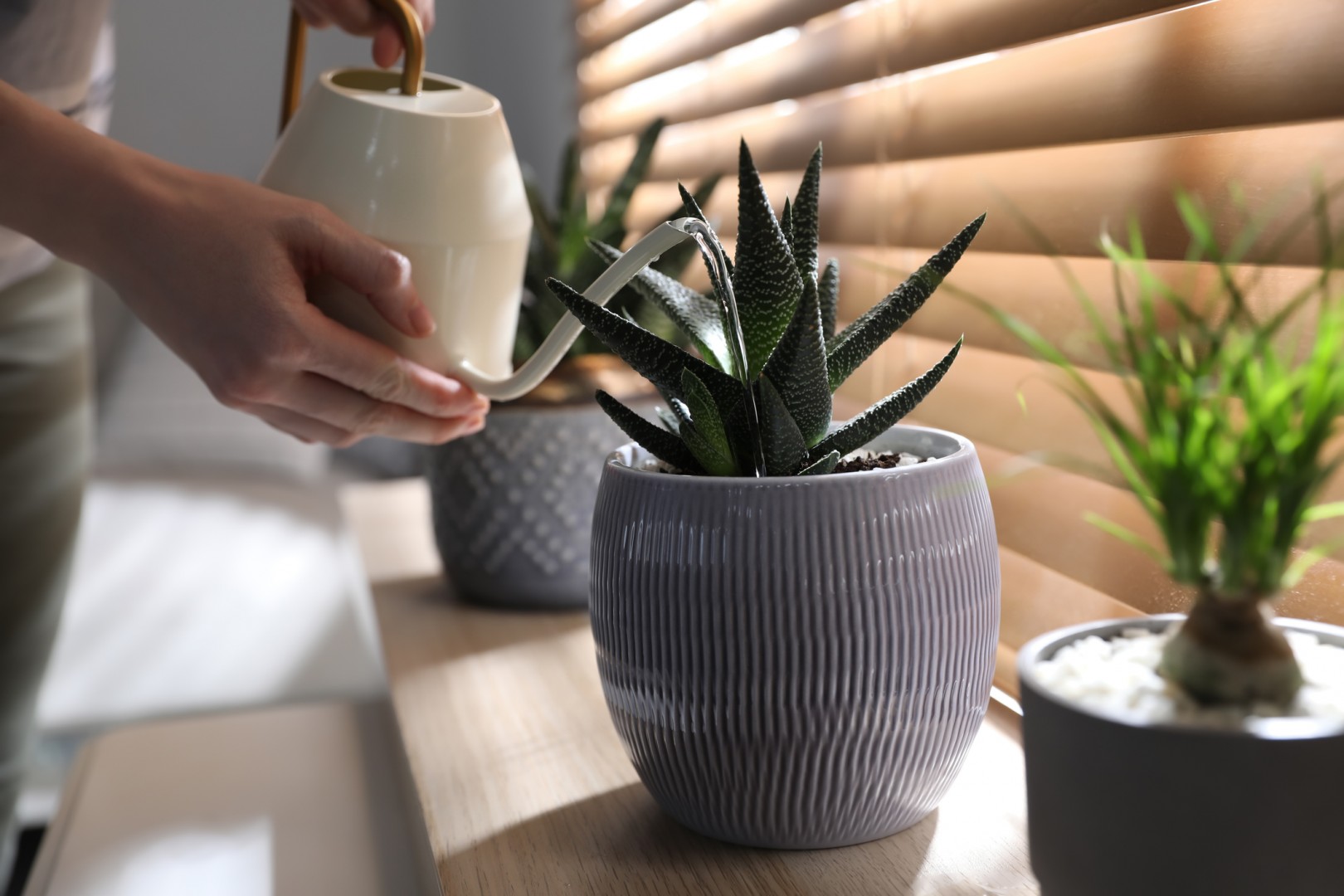
Regular top watering is the most common way to water a plant at home. This method works best with plants that do not have foliage resting directly on the soil surface, have a pot with a drainage hole and platter underneath, and/or are particularly large and difficult to move. The best way to top water your plant is by using a watering can—especially one with a narrow slow-pour or “gooseneck” spout. Slowly pour the water toward the stem of your plant and let the soil absorb the amount of water it needs. Water sparingly, even with large pots, because excess water can accumulate very quickly. Check the moisture level of the soil either by touch or with a moisture meter before and after watering to ensure that the soil does not get overly saturated.
The most important thing with top watering and watering in general is to ensure that after you water, you check the bottom of your pot to ensure there is no sitting water in the bottom of your pot. This is crucial as any water that sits in the bottom of your pot has the chance to develop root rot. This can lead to the death of your plant quickly.
Saturated/Thorough watering should only be done for certain plants that thrive in very moist or boggy soil. Plants such as ferns, nerve plants, eucalyptus, and some tropicals need soil that is consistently moist. Just ensure that when you water this way that you let the water stop dripping from the drainage holes before placing your plant back into its overpot. Any water sitting at the bottom of your pot can cause root rot and a host of other issues such as pests or insect infestation. Be advised that overwatering or inconsistent watering (flooding) can cause the cell walls of a plant’s leaves to burst. Signs of overwatering include leaves that are pale yellow, brown, or black, and often soft or mushy.
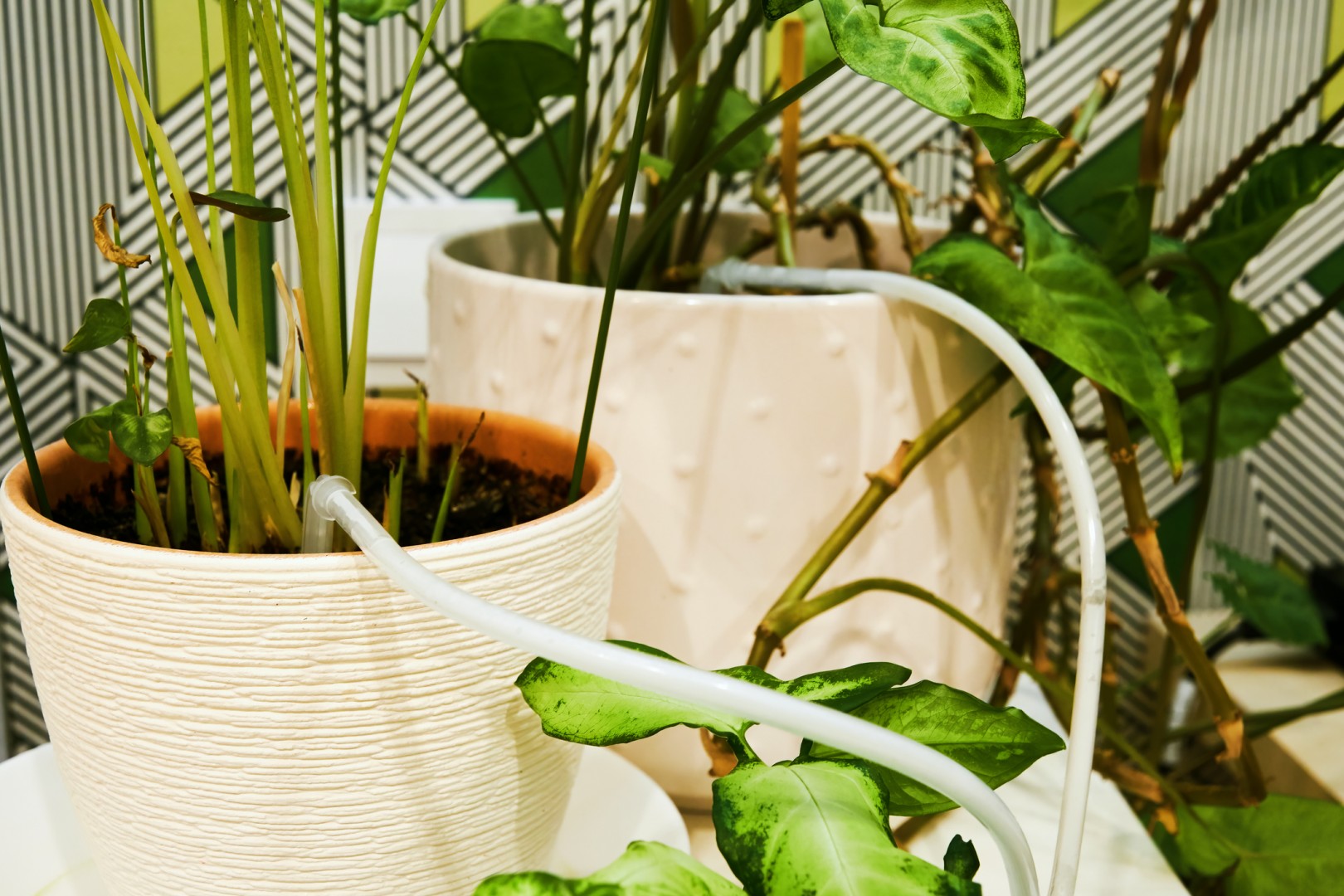
Gradual watering tools like watering bulbs may be useful for occasional watering, to help keep your plants from drying out while you are on vacation. With these tools, your soil should only absorb a minimal amount of water that it needs. A key tip for gradual watering is to check on it regularly. Ensure that excess water is not building up at the bottom of your pot as this can lead to root rot or encourage a host of pest/insect issues.
The type of water you use for your plants can play a key role in how healthy your plant stays, how much it grows and how it absorbs and uses that water. Using tap water can be fine for your houseplants but if you have a water softener that contains sodium chloride or water that is high in fluoride or chlorine, salts or minerals can build up in the soil over time and can cause issues like yellowing leaves. Non-acidic rainwater, spring water or filtered water is the best choice for your houseplants if possible. Distilled water is not recommended because it has been stripped of nutrients.
No matter what type of water you choose to use to water your plants, the temperature should always be room temperature. Hot or extremely cold water can damage both your plant and its leaves and root structure. A tip for avoiding this would be to fill up your watering can a few hours before you want to water your plants. This will allow the water to become room temperature before you water your plants.
.jpg)
Overwatering a plant is one of the most common ways that people kill a houseplant. No new growth, yellowing leaves or dropping leaves are all signs of an overwatered plant. A tip is to check your soil once you notice these problems. If your soil feels wet and overly saturated, then you should reduce your watering frequency or the amount of water you are using to water your plants. If this does not solve your problem after adjusting your watering, you may need to adjust the location and temperature your plant lives in.
Another way to figure out if you are overwatering your plants is to smell the soil. Over watering can bring issues such as mold and fungus gnats. If you notice any of these pests or problems, then overwatering may be the problem.
If you think you have overwatered your plant, you can still save your plant. Just let your soil dry out before watering again and remove any mold/pests. If that does not help your plant, you can try repotting it with fresh soil and after cutting/removing any yellow or wilted leaves on your plant.
Another common problem with watering is not giving your plant enough of it. We all live busy lives and sometimes we forget to check or plant or to even water it. A good rule of thumb is letting the top few inches of your plants soil dry out between waterings.
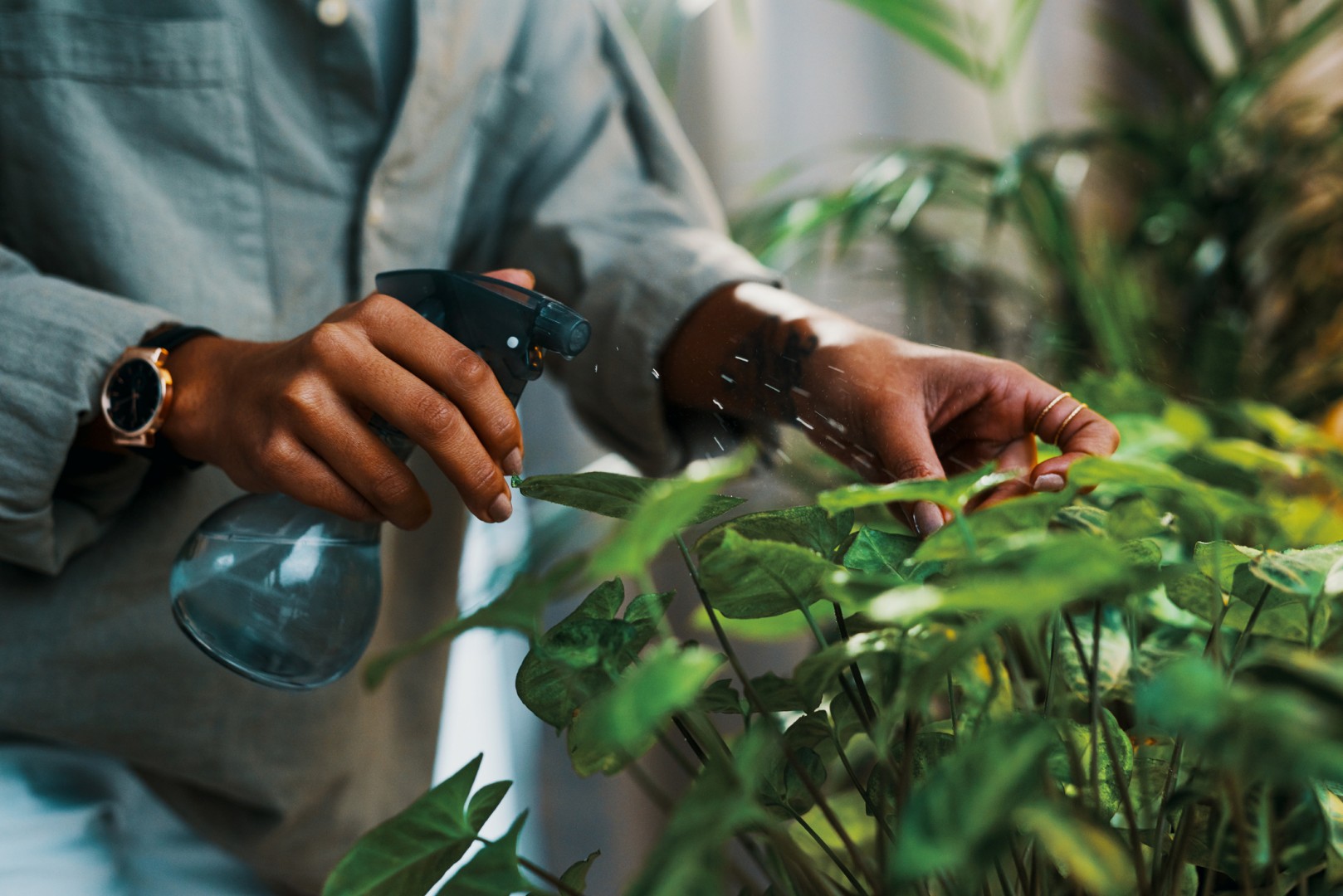
The best way to increase the humidity of your plant is misting it lightly with water. This way you increase the moisture and humidity in the air without saturating your soil more than you need to.
Most non-succulent houseplants should be watered about once per week. However, some plants like ferns, Eucalyptus and Nerve plants may need to be watered more often, while other plants like Peperomia Red Twist like their soil to be slightly dryer. Plants also require less water during their dormant season, which for most plants is in the winter. For more information about your specific plant, please consult our collections + care plant database.